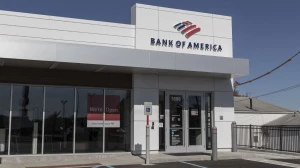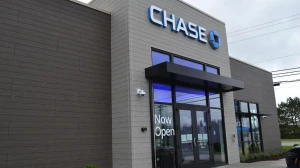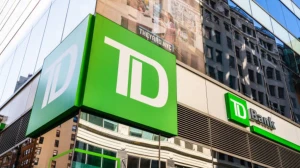
How Much Are ATM Fees in the US? Do US ATMs Charge Fees?
ATM fees vary by bank choice, with national banks charging $2.50 to $5, while online banks often refund charges, but the average fee is $4.73 due to surcharges and bank fees.
by Sangamithra
Published Sep 11, 2023 | Updated Sep 11, 2023 | 📖 7 min read
How Much Are ATM Fees in the US?
In the United States, ATM fees can vary depending on your choice of bank. National banks like Bank of America and Chase typically charge fees ranging from $2.50 to $5 for using out-of-network ATMs. Regional banks often offer lower fees, while online banks tend to have more lenient fee structures and may even refund some charges from out-of-network ATM providers. Online banks usually have lower ATM fees, often not charging their own fees and sometimes reimbursing fees from out-of-network ATM providers.
National Banks ATM Fees
National banks often charge ATM fees when you use an out-of-network ATM. However, some of them offer accounts with zero ATM fees. Below is a table listing the out-of-network ATM fees for some of the biggest national banks:
|
Bank |
Out-of-Network ATM Fee |
|
Bank of America |
$2.50 |
|
BMO |
$3 |
|
Chase |
$3 to $5 |
|
Citi |
$2.50 |
|
Huntington Bank |
$3.50 |
|
Pentagon Federal Credit Union |
$1.50 |
|
PNC Bank |
$0 to $3 (Refunds some out-of-network ATM fees) |
|
Regions Bank |
$3 |
|
Santander Bank, National Association |
$3 |
|
TD Bank |
$0 to $3 |
|
U.S. Bank |
$2.50 |
|
Wells Fargo |
$2.50 |
Regional Banks ATM Fees
Regional banks often have lower ATM fees compared to national banks. However, not all regional banks offer accounts that refund fees charged by ATM providers. Here's a table listing the out-of-network ATM fees for some regional banks:
|
Bank |
Out-of-Network ATM Fee |
|
Associated Bank |
$3 |
|
Comerica |
$2 |
|
Fifth Third Bank |
$3 |
|
First Horizon Bank |
$3 |
|
Golden 1 Credit Union |
$2 |
|
KeyBank |
$3 |
|
Security Service Federal Credit Union |
$1.50 |
|
Synovus Bank |
$2.50 |
|
United Bank |
$2 |
|
VyStar Credit Union |
None |
Online Banks ATM Fees
Online banks typically have more lenient ATM fees, often not charging any fees themselves and even refunding some fees charged by out-of-network ATM providers. Here's a table listing the out-of-network ATM fees for various online banks:
|
Bank |
Out-of-Network ATM Fee |
|
Affinity Plus Federal Credit Union |
None |
|
Alliant Credit Union |
None ($20/month refunds) |
|
Ally |
None ($10/month refunds) |
|
America First Credit Union Checking Account |
$1.50 |
|
Aspiration |
None (1 fee refund/month for Aspiration Plus Account) |
|
Axos |
None ($8/month to unlimited refunds) |
|
Bank5 Connect |
None ($15/month refunds) |
|
Bethpage Federal Credit Union |
None |
|
Betterment |
None (unlimited refunds) |
|
BrioDirect |
None ($20/month refunds) |
|
Capital One |
None |
|
CFG Bank |
None |
|
Chime |
$2.50 |
|
CIT Bank |
None ($30/month refunds) |
|
Connexus Credit Union |
None ($25/month refunds) |
|
Daylight |
None |
|
Discover |
None |
|
First Internet Bank of Indiana |
None |
|
HMBradley |
None |
|
Kinly |
$2.50 |
|
LendingClub |
None ($0 to unlimited refunds) |
|
Axos Bank - Nationwide |
None (unlimited domestic refunds) |
|
NBKC Bank |
None ($12/month refunds) |
|
Northern Bank |
$2 |
|
Premier Members Credit Union |
None |
|
Robinhood |
None |
|
Salem Five Direct |
None ($15/month refunds) |
|
Service Credit Union |
None |
|
SoFi |
None |
|
Synchrony Bank |
None ($5/month refunds) |
|
TAB Bank |
$1 to $2 |
|
TIAA Bank |
None (up to $15/month refunds) |
|
Varo Bank |
$2.50 |
|
Wealthfront |
$2.50 |
|
Wings Financial Credit Union |
10 fee refunds/month, $2,50 after |
Do US ATMs Charge Fees?
Yes, US ATMs can charge fees. These fees can vary depending on several factors, including the ATM owner, the user's bank, and whether the transaction is international or out-of-network. ATM operator fees, your bank's out-of-network fees, and international transaction fees may all apply, making it essential for consumers to be aware of potential charges and explore strategies to avoid or minimize these fees.
What is the Average ATM Fee in the US?
The average ATM fee in the US has reached a record high of $4.73. This fee is composed of two components: an average surcharge of $3.15 imposed by the ATM owner and an average fee of $1.58 charged by one's own bank for using an out-of-network ATM. While ATM fees are on the rise, it's noted that avoiding these fees is increasingly feasible due to the availability of expansive ATM networks and alternative methods for accessing cash.
How to Avoid ATM Fees?
ATM fees pose a potential threat to anyone's financial stability, and navigating the complex landscape of fees can be challenging. Two types of fees, namely surcharges from ATM owners and out-of-network fees from banks or credit unions, can quietly erode one's account balance. For individuals seeking ways to protect their hard-earned money, there are several practical and effective strategies to consider:
Getting Cash Back: When making purchases at various retail establishments, consumers can opt for cash back. This simple process involves using a prepaid or debit card and entering a personal identification number (PIN). Typically, there are no additional fees associated with obtaining cash back at the point of sale.
Finding In-Network ATMs: Minimizing the use of out-of-network ATMs is crucial. These machines can impose a surcharge from the ATM owner and an out-of-network fee from the user's bank. A convenient approach is to locate in-network ATMs, which can be achieved through a bank's mobile app or website or by identifying ATMs within partnered networks like Allpoint or MoneyPass.
Embracing Digital Payments: Modern digital payment solutions offer alternatives to cash transactions. Services such as Venmo or Zelle allow users to make payments and even tip service providers without the need for physical currency. It is advisable to verify in advance whether a preferred payment app is accepted by the merchant.
Withdrawing Larger Sums Less Frequently: Reducing the frequency of ATM visits is an effective tactic. Consumers can withdraw larger sums of cash in a single transaction, provided they are aware of their bank's ATM withdrawal limits. These limits can vary but typically range from $500 to $1,000 per day. Fewer withdrawals translate to reduced fees.
Exploring Fee-Reimbursing Accounts: Some financial institutions offer checking accounts that either eliminate ATM fees or provide reimbursements for a portion of these fees. Online-only banks, such as Alliant Credit Union and Axos Bank, are known to offer monthly reimbursements or unlimited ATM fee reimbursements. These accounts represent a cost-effective option for individuals concerned about ATM fees.
How Much Does ATM Cost?
The cost of an ATM can vary depending on several factors. Generally, the price range for ATMs can be from $1,000 to $10,000. The specific cost depends on whether one chooses a new or used machine and the type of ATM model they select.
New vs. Used: New ATMs tend to be more expensive than used ones. Used ATMs may be cheaper but might appear older and slower, potentially affecting customer usage.
ATM Type: The type of ATM one chooses also affects the price. Countertop or freestanding models typically cost less than more advanced through-the-wall ATMs.
When considering the cost, it's essential to factor in not just the purchase price but also ongoing expenses like maintenance, cash loading, and any repair costs. Additionally, individuals or business owners should weigh the potential returns on investment, as owning an ATM can be a profitable venture, particularly if they anticipate a reasonable number of customer transactions each month.
How Much Are the Average Overdraft, Maintenance, and Out-of-network ATM Fees?
The average overdraft fee, maintenance fee, and out-of-network ATM fee are important factors to consider when choosing a checking account. The average overdraft fee stands at $30.82 per occurrence, which saw a 4% decrease in the past six months. Monthly maintenance fees, a recurring cost, now average $13.95 per month, marking a 3.1% decrease compared to the previous year.
When it comes to out-of-network ATM fees, using ATMs not affiliated with your bank can add up. On average, customers face an expense of $4.55 per transaction, a 1.7% drop since the last survey. These fees may seem small individually but can accumulate significantly for regular ATM users.
Why Do Banks Charge ATM Fees?
Banks charge ATM fees primarily as a means to cover the costs associated with maintaining and operating their ATM networks. When customers use ATMs that belong to other banks or are not part of their bank's network, it incurs expenses for the bank that owns the ATM.
These expenses include transaction processing fees, maintenance, and servicing of the ATM machines, as well as the cost of keeping cash stocked in them. To mitigate these expenses, banks pass on a portion of the cost to the customer in the form of ATM fees.
This practice is especially common when customers use out-of-network ATMs, where fees from both the ATM owner and the customer's bank may apply, resulting in double charges for the customer. While ATM fee reimbursement programs exist, they often come with limitations, such as monthly caps, to manage the bank's costs while still providing some relief to customers.
How Much Are ATM Fees in the US - FAQs
1. What is the average ATM fee in the US?
The average ATM fee in the US is $4.73, consisting of a surcharge by the ATM owner and a fee from the user's own bank.
2. How can one avoid ATM fees?
Strategies include getting cash back at retail stores, using in-network ATMs, embracing digital payments, making larger withdrawals less frequently, and exploring fee-reimbursing checking accounts.
3. Why do banks charge ATM fees?
Banks charge ATM fees to cover the costs of ATM network maintenance, transaction processing, and cash stocking, especially when customers use out-of-network ATMs.
4. Do US ATMs charge fees?
Yes, US ATMs can charge fees, including surcharges, out-of-network fees, and international transaction fees, depending on various factors.
5. How much does an ATM cost to purchase?
The cost of an ATM can range from $1,000 to $10,000, depending on factors like new vs. used machines and the type of ATM model selected.




